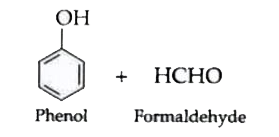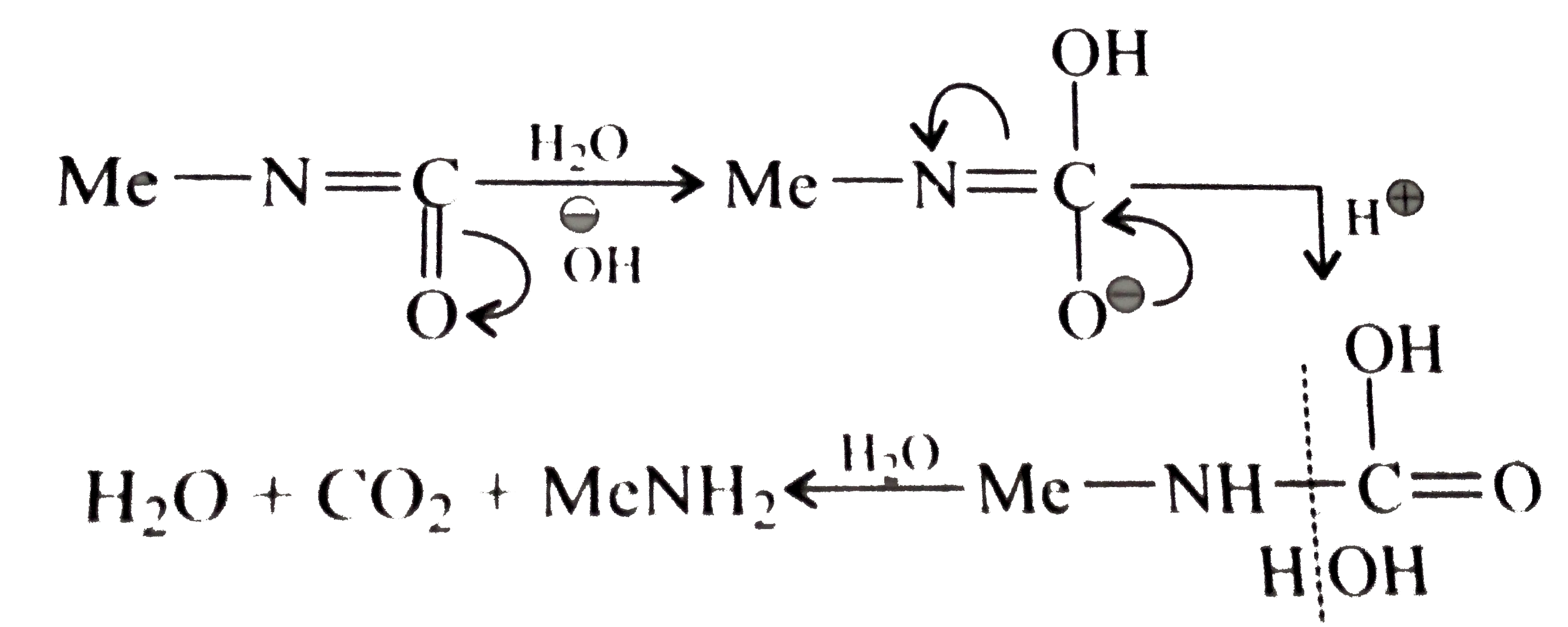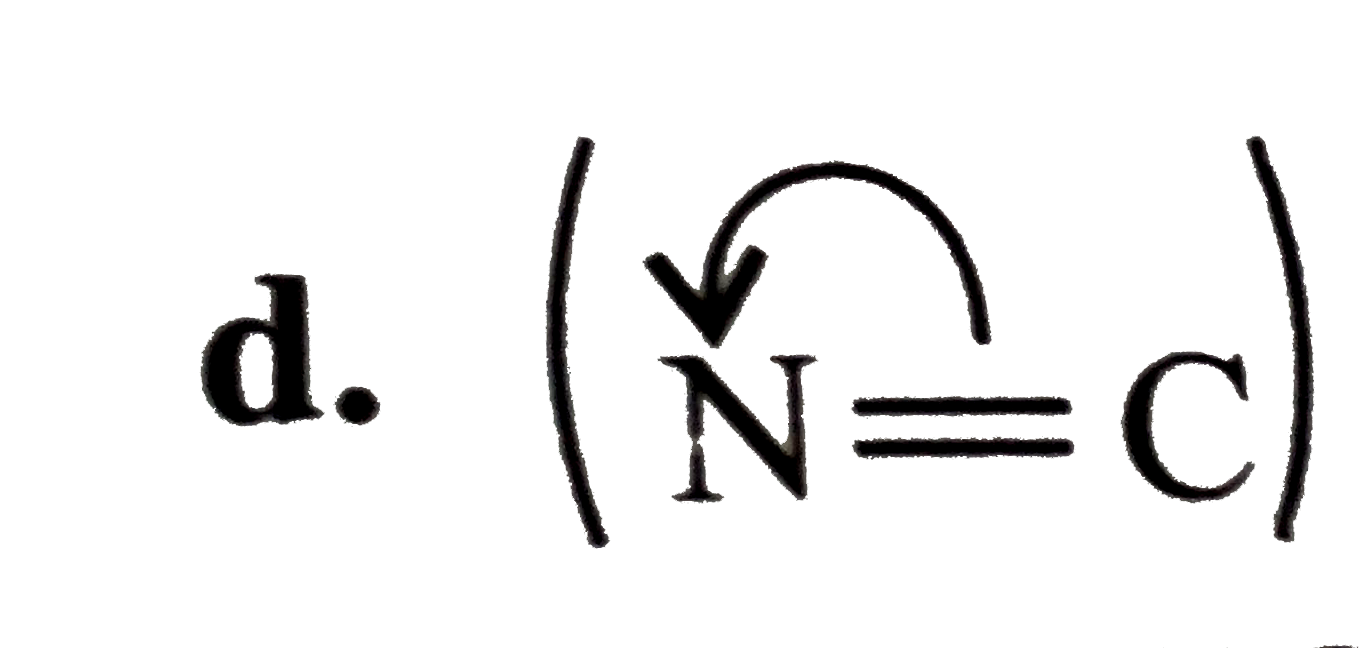Explore topic-wise InterviewSolutions in .
This section includes InterviewSolutions, each offering curated multiple-choice questions to sharpen your knowledge and support exam preparation. Choose a topic below to get started.
| 17651. |
The reduction of CH_3-CH_2-C equiv N with sodium and alcohol results in the formation of |
|
Answer»
|
|
| 17652. |
Whichvitamin deficiencyleads to the diseaseosteomalacia ? |
|
Answer» VITAMIN D |
|
| 17653. |
Which compound gives dye tests ? |
|
Answer» METHYLAMINE |
|
| 17654. |
When the zinc electrode having reduction potential – 0.76 V is attached to NHE, will it act as anode or cathode? |
| Answer» Solution :Since REDUCTION POTENTIAL is negative, OXIDATION will OCCUR at this electrode. It will ACT as anode. | |
| 17655. |
Total number of electrons present in 11.2L of NH_(3) at STP is: |
|
Answer» `6.02xx10^(23)` |
|
| 17656. |
There is no effect of ........ on the motion of gas molecules. |
|
Answer» SOLUTION :(a) 352 (B) 1.632 |
|
| 17658. |
Write the names and structures of the monomers in the following polymers : (i) Buna-S (ii) Nylon 6, 6 (iii) Bakelite |
Answer» SOLUTION :(i) Buna-S  (ii) NYLON 6, 6 `underset("Adipic ACID")(HOOC(CH_(2))_(6)COOH)+underset("Hexamethylenediamine")(H_(2)N(CH_(2))_(6)NH_(2))` (iii) Bakelite 
|
|
| 17659. |
What is the difference between multimolecular and macromolecular colloids ? Give one example of each. How are associated colloids different from these two types of colloids ? |
|
Answer» Solution :Depending upon the type of the particles of the dispersed phase, colloids are classified as: multimolecular, macromolecular and associated colloids. (i) Multimolecular colloids: On dissolution a large number of atoms or smaller molecules of a substance aggregate together to form species having size in the colloidal range `(1-1000 nm)`. The species thus formed are called multimolecular colloids. For example, a GOLD solution may contain particles of various sizes having many atoms. Sulphur sol consists of particles containing a thousand or more of Sg sulphur molecules. (ii) Macromolecular colloids : Macromolecules in suitable solvents form solutions in which the size of the macromolecules may be in the colloidal range. Such system are called macromolecular colloids. These colloids are quite stable and resemble true solutions in many RESPECTS. Examples of NATURALLY occurring macromolecules are starch, cellulose, proteins and enzymes and those of man-made macromolecules are polythene, nylon, polystyrene, synthetic rubber etc. (iii) Associated colloids (Micelles) : There are some substances which at low concentrations behave as normal strong electrolytes, but at higher concentration exhibit colloidal behaviour due to the formation of aggregates. The aggregrated particles thus formed are called micelles. These are also known as associated colloids. The formation of micelles takes place only above a particular temperature called Kraft temperature `(T_(k))` and above particular concentration called critical MICELLE concentration (CMC). On dilution, these colloids revert back to individual ions. Surface active agents such as soaps and synthetic detergents belong to this class. For soaps the CMC is `10^(-4)` to `10^(-3) mol L^(-1)`. These colloids have both lyophobic and lyophilic parts. Micelles may contain as many as 100 molecules or more. |
|
| 17660. |
The size of I, I^(+) and I^(-) follows the order: |
|
Answer» `I^(+)GTI^(-)gtI^(-)` |
|
| 17662. |
What is the product formed when propene is hydrolysed in the presence of mineral acid? |
|
Answer» PROPAN-1-OL |
|
| 17663. |
What is Addition Polymerization ? Explain the mechanism of Addition Poly- merization. |
|
Answer» Solution :Addition Polymerization : In this type of polymerization, the molecules of the same monomer or different monomers add together on a large scale to form a polymer. The monomers used are unsaturated compounds, e.g., alkenes, alkadienes and their derivatives. This mode of polymerization leads to an increase in chain length and chain growth can take place through the formation of either free radicals or ionic species. Free RADICAL mechanism : A variety of alkenes or dienes and their derivatives are polymerized in the presence of a free radical generating initiator (catalyst) LIKE benzoyl peroxide, acetyl peroxide, tert-butyl peroxide, etc. For EXAMPLE, the polymerization of ethene to polythene consists of heating or exposing to light a mixture of ethene with a small amount of benzoyl peroxide initiator. The PROCESS starts with the addition of phenyl free radical FORMED by the peroxide to the ethene double bond thus generating a new and larger free radical. This step is called chain initiating step.  `overset(*)C_(6)H_(5)+CH_(2)=CH_(2)rarrCH_(6)H_(5)-CH_(2)-overset(*)CH_(2)` As this radical reacts with another molecule of ethane , another bigger sized radical is formed. The repetition of this sequence with new and bigger sized radicals carries the reaction forwoord and the step is termed as chain propagating step. Chain Propagating step : `C_(6)H_(5)-CH_(2)-overset(*)CH_(2)+CH_(2)=CH_(2)rarr C_(6)H_(5)-CH_(2)-CH_(2)-overset(*)CH_(2)rarr C_(6)H_(5)+CH_(2)CH_(2)+""_(n)CH_(2)-overset(*)CH_(2)` Ultimately, at some stage the product radical thus formed reacts with another radoical to form the polymerized product. This step is called the chain the Chain terminating step. Chain terminating step `C_(6)H_(5)(--CH_(2)-CH_(2)--)_(n)CH_(2)-overset(*)CH_(2)` `C_(6)H_(5)(--CH_(2)-overset(+)CH_(2)--)_(n)CH_(2)-overset(*)CH_(2)rarrC_(6)H_(5)(--CH_(2)-CH_(2)--)_(n)CH_(2)-CH_(2)-CH_(2)-CH_(2)(--CH_(2)-CH_(2)--)_(n)C_(6)H_(5)` |
|
| 17664. |
The unit of equilibrium constant for the reaction , H_2+I_2 hArr 2HI IS : |
|
Answer» |
|
| 17665. |
The shape of XeF_6 is, |
|
Answer» SQUARE planar 
|
|
| 17666. |
Write the chemical equation for the following: Ca_(3)(PO_4)_2 + SiO_(2) + C overset("heat") rarr |
| Answer» SOLUTION :`Ca_(3)(PO_4)_2 + 6SiO_2 + 10 C rarr 6CaSiO_3 + P_4 + 10CO` | |
| 17667. |
Which of the following statements(s) is (are) correct ? |
|
Answer» A PLOT of log `K_(P)` VERSUS `1//T` is linear |
|
| 17668. |
The reagent for the above conversion is: |
|
Answer» ALCOHOLIC KOH  . .
|
|
| 17669. |
What information can be obtained on the structure of alkene on ozonolysis ? |
Answer» Solution :The reaction between an ALKENE and OZONE results in the formation of ozonide which upon reduction gives the formation of carbonyl compound. Such a reaction is called ozonolysis. Analysing the final carbonyl products the POSITION of double bond in an alkene can be established. For example : Ethylene on ozonolysis, FOLLOWED by the reduction gives formaldehyde. 
|
|
| 17670. |
Which of the following statement is correct:- As the %s- character of a hybrid orbital decreases |
|
Answer» The BOND angle decreases |
|
| 17671. |
Which of the following statement is not correct? (1) La(OH)_(3) is less basic than Lu(OH)_(3) (2) In lanthanide series ionic radius of Ln^(3+) ions decrease (3) Zn, Cd, Hg are colourless and are diamagnetic (4) Mn shows maximum oxidation state is +7 |
|
Answer» Solution :Key:1 `La(OH)_(3)` is more basic than `LU(OH)_(3)`. This is because ionic SIZE of `La^(3+)` ION is more than `Lu^(3+)ion`. |
|
| 17672. |
What is distillation ? |
| Answer» SOLUTION :Electro-refining : Principle - It is APPLIED for metals like Cu, AL, Zn, Pb, Sn, etc. | |
| 17673. |
What are enzymes ? |
|
Answer» Solution :ENZYMES are biological catalysts. Each biological catalysts. Each biological system requires a different enzyme. Thus, as compared to conventional catalysts , enzymes are very specific are very specific and efficient in their action . They are required in onyl small quantity and work at optimum temperature (310K) and p H (7-4) under one atmosphere pressure. Chemically , they are globular proteins. However, some enzyme are ALSO associated with some non- protein component called the COFACTOR for their acitivity. Cofactors are two types : (a) Inorganic ions such as `Zn^(2+),Mg^(2+),Mn^(2+),Fe^(2+),CU^(2+),Co^(2+)`, etc. (b) Organic molecules : These are also of two types. (i) Coenzymes : These are usually derived form vitamins such as thaimine , riboflavin , niacin , etc. They are loosley held to the protein and can be easily spearted by dialysis. (ii) Prosthetic GROUP : These are also derived from vitamin such as biotin but are tightly held to the protein molecule by covalent bonds. Thet can be spearated only by careful hydrolysis. |
|
| 17674. |
Which of the following can work as dehydrating agent for alcohols : |
|
Answer» `H_2SO_4` |
|
| 17675. |
The smallest ketone and it's functional isomere are reated with NH_(2) - OH to form oxime |
|
Answer» TWO DIFFERENT OXIME are formed |
|
| 17676. |
Which of the following ion is not present aq. Sloution of potash alum? |
|
Answer» `K^(+)` |
|
| 17677. |
Two liquids A and B form an ideal solution. At 300 K, the vapour pressure of a solution containing 1 mole of A and 3 moles of B is 550 mm of Hg. At the same temperature, if one mole of B is added to this solution, the vapour pressure of the solution increases by 10 mm of Hg. Determine the vapour pressure of A and B in their pure states |
|
Answer» |
|
| 17678. |
Which solution will show highest resistance during the passage of current: |
|
Answer» `1NNaCI` |
|
| 17679. |
Which metal in the first series of transition metals exhibits (+1) oxidation state most frequently and why? |
| Answer» Solution :Cu exhibits (+1) oxidation state in first transition ELEMENTS because after loss of one ELECTRON, STABLE configuration is attained i.e., `d^(10)` configuration. | |
| 17680. |
Which of the following pairs of structures represents facial and meridional isomers (geometrical iosmers) respectively ? |
|
Answer»
|
|
| 17681. |
Which of the following has lowest pK_b value ? |
|
Answer» pyrrole |
|
| 17682. |
Which metal is extracted by electrolytic reduction methoed |
|
Answer» Cu |
|
| 17683. |
Whichone of the followingreactionswill not yielda carboxylicacid? |
|
Answer» `RMGX + CO_(2) to` |
|
| 17684. |
What happens when Phenol is heated with NH_3 ? |
Answer» SOLUTION :
|
|
| 17685. |
Which statements are correct about MIC (methyl isocyanate, Me-N=C=O). |
|
Answer» `MIC` is preparedbyt the reaction of `MeNH_(2)` and `COCl_(2)` (phosgene). (B)  . .
|
|
| 17686. |
When mercuric iodide is added to the aqueous solution of potassium iodide, then: |
|
Answer» FREEZING POINT is raised `2KI+HgI_(2)rarrK_(2)[HgI_(4)]overset("ionizes")rarr` `underset("4 ions")ubrace(2K^(+)+2I^(-))""underset("3 ions")ubrace(2K^(+)+HgI_(4)^(2-))` Thus, NUMBER of ions decreases in the solution. Hence depression in freezing point is LESS, i.e., actual freezing point is raised. |
|
| 17687. |
Which of the following is a chain growth polymer ? |
|
Answer» STARCH |
|
| 17688. |
What is the pH value of (N)/(100) KOH solution |
|
Answer» `10^(-11)` POH = 3 `because pH + pOH = 14, pH = 14 - 3 = 11`. |
|
| 17689. |
What should be the considerations during the extraction of metals by electrochemical method? |
|
Answer» Solution :The FOLLOWING factors should be KEPT in MIND to ENSURE proper precautions : (i) Reactivity of the metal. (ii) Suitability of the ELECTRODE. |
|
| 17690. |
Which of the following is most stabls ? |
|
Answer» `HF` |
|
| 17691. |
Which of the following does not contain number of neutrons equal to that of ._(18)^(40Ar |
|
Answer» `._(19)^(41)K` While `._(21)^(40)Sc " has " 40 - 21 = 19` neutrons |
|
| 17692. |
Which one of the following on oxidation will not give a carboxylic acid with the same number of carbon atoms |
|
Answer» `CH_(3)COCH_(3)` One carbon atom is LESS in the ketone group |
|
| 17693. |
What type of hybridisation of 'C' and 'O' in ether ? |
| Answer» SOLUTION :`sp^(3)` | |
| 17694. |
Which of the following is the smallest cation? |
|
Answer» `NA^(+)` |
|
| 17695. |
Vincyl chloride reacs with HCl to form |
|
Answer» 1,1-dichloro ETHANE |
|
| 17696. |
Write important functions of lipids. |
|
Answer» (b) Fats and oils are the GREATEST energy reservoirs. |
|
| 17697. |
Which of the following species is the least stable ? |
|
Answer» `O_(2)` |
|
| 17698. |
Under hydrolytic conditions, the compounds used for preparation of linear polymer and for chain termination, respectively, are |
|
Answer» `CH_(3)SiCl_(3)` and `Si(CH_(3))_(4)` |
|
| 17699. |
Which one of the following is always not negative |
|
Answer» ENTHALPY of combustion |
|
| 17700. |
The value of rate constant of a pseudo first order reaction…… |
|
Answer» depends on the CONCENTRATION of REACTANTS PRESENT in SAMLL amount `CH_(3)COOC_(2)H_(5)+underset("Excess")(H_(2)O)overset(H^(+))to` `CH_(3)COOH+C_(2)H_(5)OH` This reaction is pseudo first order and its rate does not depends on`H_(2)O` as the concentration of `H_(2)O` remain almost constant. Rate=K`[CH_(3)COOC_(2)H_(5)]` Where ,k=`k_(1)[H_(2)O]`=constant In this way the reactant of first order depends on the reactant which is in less proportion. So (A) is correct. |
|






 , bond
, bond